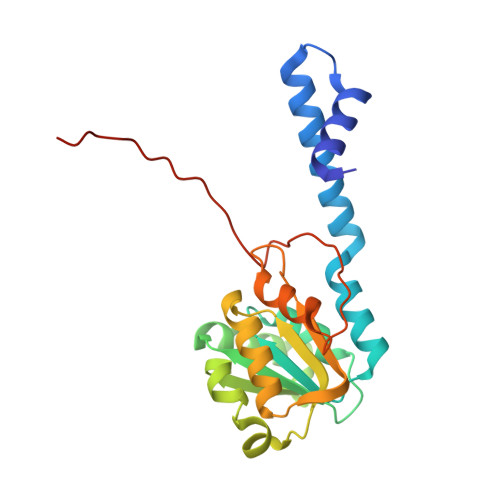Mapping the conformational space accessible to catechol-O-methyltransferase.
Ehler, A., Benz, J., Schlatter, D., Rudolph, M.G.(2014) Acta Crystallogr D Biol Crystallogr 70: 2163-2174
- PubMed: 25084335
- DOI: https://doi.org/10.1107/S1399004714012917
- Primary Citation of Related Structures:
4P7F, 4P7G, 4P7J, 4P7K, 4PYI, 4PYJ, 4PYK, 4PYL, 4PYM, 4PYN, 4PYO, 4PYQ - PubMed Abstract:
Methylation catalysed by catechol-O-methyltransferase (COMT) is the main pathway of catechol neurotransmitter deactivation in the prefrontal cortex. Low levels of this class of neurotransmitters are held to be causative of diseases such as schizophrenia, depression and Parkinson's disease. Inhibition of COMT may increase neurotransmitter levels, thus offering a route for treatment. Structure-based drug design hitherto seems to be based on the closed enzyme conformation. Here, a set of apo, semi-holo, holo and Michaelis form crystal structures are described that define the conformational space available to COMT and that include likely intermediates along the catalytic pathway. Domain swaps and sizeable loop movements around the active site testify to the flexibility of this enzyme, rendering COMT a difficult drug target. The low affinity of the co-substrate S-adenosylmethionine and the large conformational changes involved during catalysis highlight significant energetic investment to achieve the closed conformation. Since each conformation of COMT is a bona fide target for inhibitors, other states than the closed conformation may be promising to address. Crystallographic data for an alternative avenue of COMT inhibition, i.e. locking of the apo state by an inhibitor, are presented. The set of COMT structures may prove to be useful for the development of novel classes of inhibitors.
- Molecular Design and Chemical Biology, F. Hoffmann-La Roche, Grenzacher Strasse 124, Basel, Switzerland.
Organizational Affiliation:



















